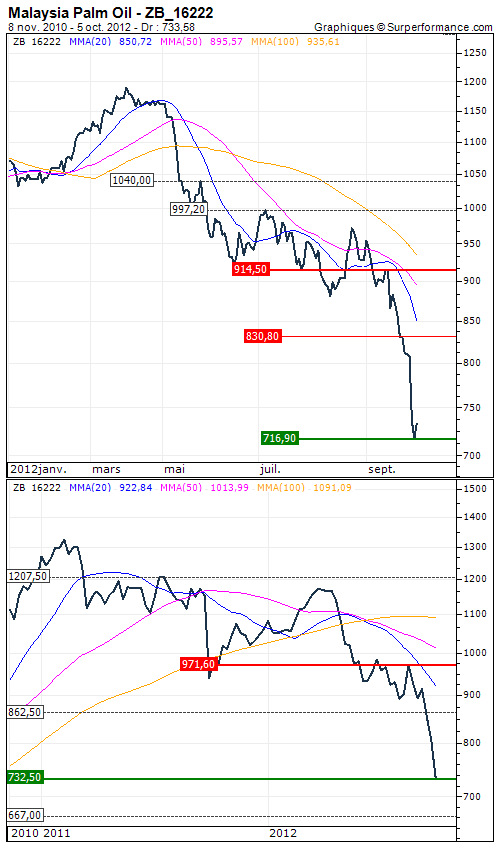Crude Palm Oil : Hardly affected by the economic slowdowns
By Etienne Veber
Asian speculators continue their selling pressure started in August. In five weeks, the oil palm has lost nearly 25% of the "Malaysia Derivatives Exchange". Producers are facing a reduced demand from Western countries. Facing austerity plans, Europeans cut down their consumption in all areas. Palm oil is used in many industries such as food sector, chemicals, biofuels and cosmetics. Demand remains strong in cosmetics as the luxury sector continues to stay ahead in the market.
The two biggest suppliers in the world, Indonesia and Malaysia, are facing problems of storage. Indonesia exports to Europe and China fell 6.6% in August. Malaysia's exports fell 0.7% in September. At the same time, production continues to increase. Local experts estimate that the two countries could be left with stocks of around 3 million tonnes in January.
Technically, the trend remains strongly bearish in daily data below USD 850, which also refers to the 20-day moving average. Selling pressure could again worsen below USD 715 and make prices drop to the USD 600 support area. On the upside, only a weekly close above USD 860 would neutralize the trend.
We will be able to take short positions and trade the break of the USD 710 level using Crude Palm Oil Future (code: FCPO) on the “Malaysia Derivatives Exchange".








